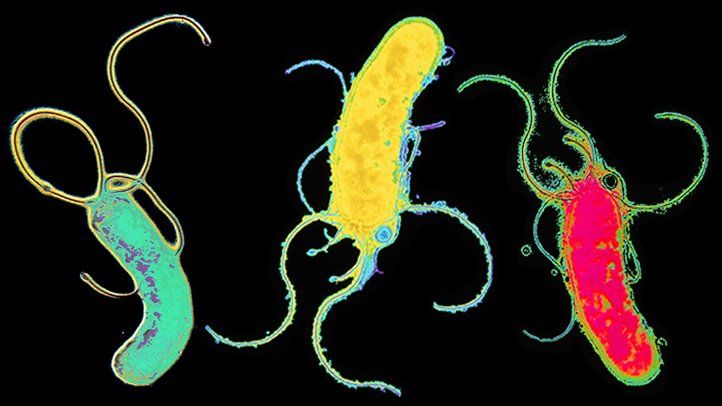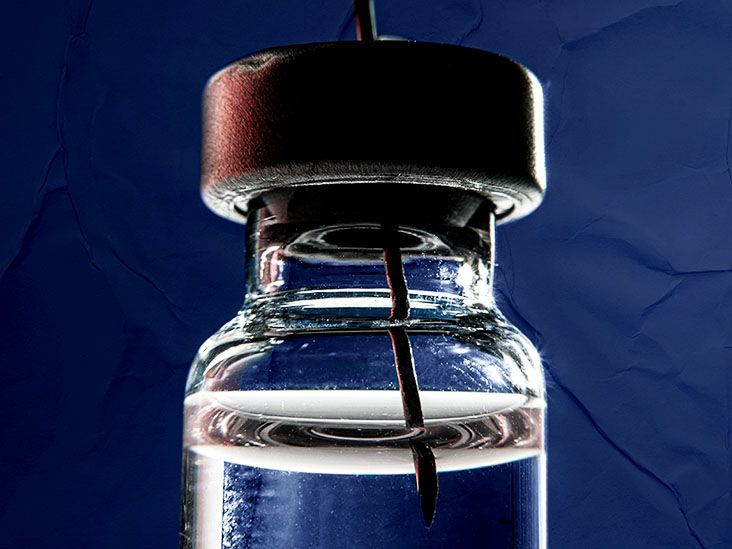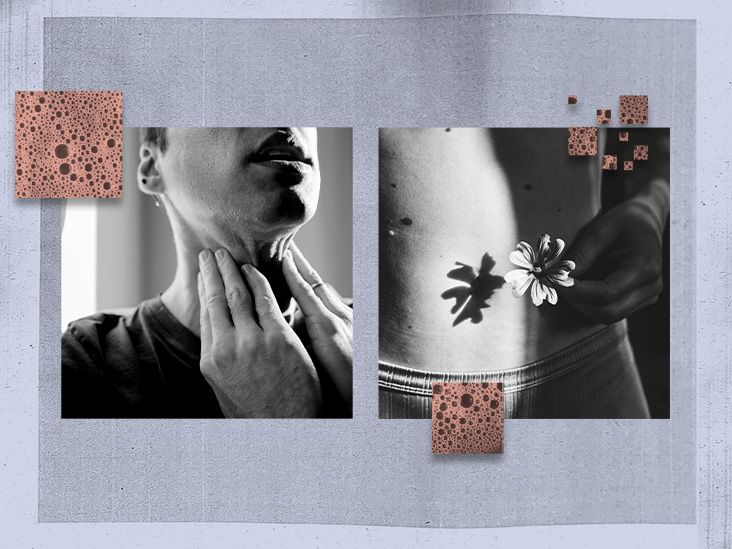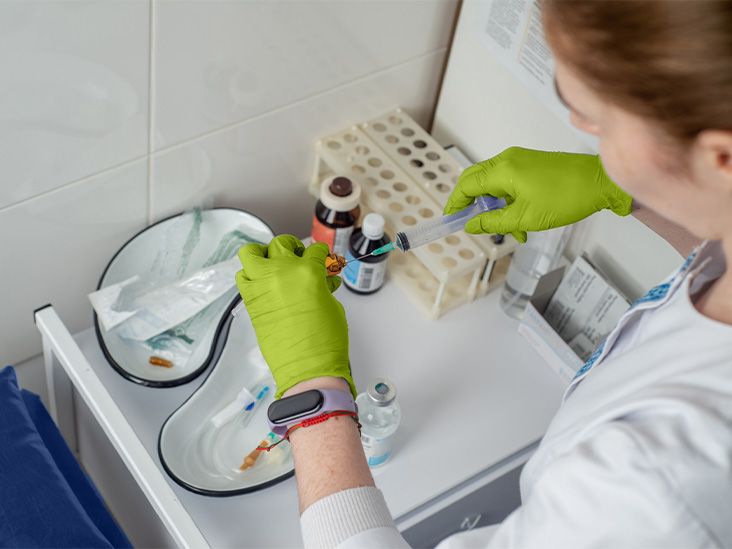If you're exploring immunotherapy for stomach cancer for yourself or someone you love, I'm really glad you're here. This is a big topic, and it can feel like learning a new language overnight. Take a breathwe'll go step by step. By the end, you'll know what immunotherapy is, who it helps most, what to expect day to day, and how to talk to your oncologist with confidence. And we'll do it in plain English, with warmth, clarity, and zero fluff.
The shortest version? Immunotherapy can help certain people with stomach cancer (also called gastric cancer) live longer and feel betterespecially when tumors have markers like PD-L1, MSI-H/dMMR, or HER2and it's often paired with chemotherapy. But it's not for everyone. Results vary by tumor biology and stage, and side effects can be real. Let's unpack the "why," the "who," and the "what next."
What is it
Quick definition and how it works
Immunotherapy is a type of cancer treatment that helps your own immune system recognize and attack cancer cells. Think of cancer as a master of disguiseit wears biochemical "invisibility cloaks" to hide from T cells (your immune soldiers). Immunotherapy pulls off that cloak.
Immune checkpoint basics (PD-1/PD-L1)
Your T cells have a brake pedal called PD-1. Many cancer cells make a matching "brake button" called PD-L1. When PD-1 and PD-L1 connect, the T cell eases off and doesn't attack. Checkpoint inhibitorsdrugs like nivolumab and pembrolizumabblock this handshake. Suddenly, those sleepy T cells wake up and get back to work.
How cancers hideand how drugs unmask them
Cancers also play dirty: they mutate, inflame their surroundings, and confuse your immune radar. Checkpoint inhibitors interrupt that trickery. In some tumorsespecially those with lots of mutations or specific biomarkersthe unmasking can be dramatic, leading to real, lasting responses.
Where immunotherapy fits among treatment options
Immunotherapy isn't a solo act. It's part of a toolkit that includes surgery, chemotherapy, targeted therapy, and radiation. Many patients receive combinations tailored to their tumor's "fingerprint."
How it combines with other treatments
- Surgery: For early, resectable cancer, surgery can be curative; immunotherapy is being studied in this setting and is more often used in advanced disease.
- Chemotherapy: Commonly paired with PD-1 inhibitors in the first-line treatment of advanced or metastatic disease.
- Targeted therapy: In HER2-positive gastric cancer, PD-1 inhibitors are often combined with trastuzumab and chemo.
- Radiation: Used selectively for symptom control or specific scenarios; less commonly paired directly with immunotherapy, but strategies are evolving.
When it's used: resectable vs. advanced
Immunotherapy is most established in advanced or metastatic stomach cancer. Trials are exploring earlier use (before or after surgery), but for many people today, it's considered when the cancer can't be removed or has spread.
Therapy types
Immune checkpoint inhibitors
The workhorses here are PD-1 inhibitors: nivolumab (Opdivo) and pembrolizumab (Keytruda). These are the most commonly used immunotherapy types in stomach cancer. According to an overview by the American Cancer Society (linked as anchor text later), they're used alone or with chemotherapyand, for HER2-positive tumors, often with trastuzumab too.
Who typically gets them (biomarkers that matter)
- PD-L1 expression (reported as CPS): Higher CPS often predicts better response to PD-1 inhibitors.
- MSI-H/dMMR (mismatch repair deficient): These tumors have lots of mutations and tend to respond especially well.
- TMB-H (tumor mutational burdenhigh): More mutations can mean more "flags" for immune recognition.
- HER2 status: If positive, first-line therapy may include trastuzumab plus chemoand increasingly, a PD-1 inhibitor.
How they're given and with what
PD-1 inhibitors are IV infusions, typically every 26 weeks. In first-line metastatic disease, they're frequently combined with platinum/fluoropyrimidine chemotherapy. In HER2-positive disease, a common combo is PD-1 inhibitor + trastuzumab + chemo.
Targeted antibodies with immune effects
- Trastuzumab: A targeted antibody for HER2-positive disease. It flags cancer cells for immune attack and is a backbone of HER2-positive therapy.
- Trastuzumab deruxtecan: An antibody-drug conjugate (ADC) that delivers a chemo "payload" right to HER2-expressing cells. It can work even when prior HER2 therapy stops working.
- Ramucirumab: Targets VEGFR2 (blood vessel growth). Often used in later lines, commonly with paclitaxel. While not a classic "immunotherapy," it can influence the tumor environment and sometimes plays well in combination strategies.
For a big-picture look at what's approved now and what's emerging, resources like the Cancer Research Institute and peer-reviewed reviews in the World Journal of Gastroenterology offer helpful context (linked later as natural citations).
Emerging options in trials
The pipeline is buzzing: new checkpoints (like CTLA-4 and LAG-3), bispecific antibodies, next-gen ADCs, CAR T or CAR NK cell therapies, oncolytic viruses, and vaccines. Why does this matter? Because clinical trials can offer access to tomorrow's treatments todayespecially if your biomarkers suggest you might benefit or if standard options are limited.
Why clinical trials matter and how to find one
Trials are carefully monitored, often covering extra tests and follow-up. If you're curious, ask your oncologist to search for trials based on your biomarkers and location. You can also explore reputable databases from national cancer organizations and trial finders referenced by the Cancer Research Institute in its overview of stomach cancer immunotherapy options.
Proven results
When immunotherapy works best
Here's the pattern we see: the more "visible" a tumor is to the immune system, the better immunotherapy tends to work. MSI-H/dMMR tumors and those with high PD-L1 (higher CPS) or high TMB stand out. In HER2-positive disease, combinations that add a PD-1 inhibitor to trastuzumab and chemotherapy have improved outcomes for many patients.
First-line vs. later-line treatment
Starting immunotherapy early (first-line) in the right biomarker setting often delivers the biggest impact on survival. Later-line use can still help, especially in MSI-H/dMMR disease or PD-L1positive tumorsbut expectations should be individualized.
Realistic outcomes to discuss
Let's set helpful expectations. Not everyone sees tumor shrinkage. Some get stable disease (which can still be a win), and a subset experiences deep, durable responses that last beyond treatment. Your odds depend on biomarkers, overall health, prior treatments, andyessome biology we don't fully understand yet.
Why results vary
Tumor biology is complex. Two patients with similar stages can have very different genetic drivers and immune environments. That's why testing matters so muchand why a personalized plan beats one-size-fits-all advice every time.
What experts and guidelines say
Major guidelines and expert groups generally support PD-1 inhibitors, often with chemotherapy, in biomarker-selected first-line advanced gastric cancer, and pembrolizumab in MSI-H/dMMR cases. Summaries from the American Cancer Society explain approved checkpoint inhibitors and side effects, while expert reviews in the World Journal of Gastroenterology discuss combinations and future directions. For an accessible overview, see the American Cancer Society on immunotherapy for stomach cancer, and a clinician-facing summary like the WJG editorial on current practice and evolving strategies can deepen the context through a recent review of gastric cancer immunotherapy.
Side effects
Common side effects of checkpoint inhibitors
Most people do okay day to day, but mild-to-moderate issues are common: fatigue, low-grade fever, cough, nausea, rash or itchiness, reduced appetite, joint or muscle aches, and bowel changes. These are manageable for manyoften with supportive medications and a little planning.
Serious immune-related reactions
Because these drugs rev up the immune system, they can sometimes cause it to attack healthy organs. This is why timing and early reporting are everything. Possible issues include inflammation of the lungs (pneumonitis), bowel (colitis), liver (hepatitis), thyroid or adrenal glands (endocrinopathies), kidneys (nephritis), and skin. Infusion reactions can also happen. Most serious events are treatableoften with steroidsand your team may pause or stop treatment based on severity.
Red flags to call about immediately
- New or worsening shortness of breath or persistent cough
- Severe diarrhea or abdominal pain
- Yellowing of the eyes/skin, dark urine
- Severe headache, dizziness, confusion, vision changes
- Rapid heartbeat, chest pain
- Extreme fatigue, fainting, or high fevers
Do not "wait and see." A quick call can prevent a small problem from becoming a big one.
Balancing benefits and risks
Your goals matter: Are you aiming for maximum tumor shrinkage, symptom control, more time with good quality of lifeor a mix? Share your priorities. Our job (yes, you and your care team together) is to match the treatment to your goals and your medical history.
Who's eligible
Key biomarkers to test
- PD-L1 (CPS score): Helps predict benefit from PD-1 inhibitors.
- MSI-H/dMMR: Strong predictor for response; can open doors to single-agent immunotherapy.
- TMB-H: Another marker that sometimes correlates with benefit.
- HER2 status: Guides use of trastuzumab, and supports combinations that include PD-1 inhibitors.
Staging and clinical factors
Advanced or metastatic disease is where immunotherapy is most established. Performance status (how you're functioning day to day) and other health conditions shape decisions, too. Autoimmune diseases don't automatically rule you out, but they do require careful riskbenefit talks.
Getting the right tests
Ask for comprehensive testing on a recent tumor sample. If the cancer has changed or progressed, a re-biopsy might be helpful. Liquid biopsies (blood tests) can complement tissue testing, especially when obtaining tissue is hard. For insurance approvals, your clinic team can help navigate prior authorization and supply documentation on medical necessity.
Daily journey
How infusions work
Most PD-1 infusions take 3060 minutes, every 26 weeks. You'll likely have lab work beforehand, vital signs checked, and sometimes premedications. Imaging (CT scans) typically happens every 612 weeks early on, then less frequently if things are stable. Bring a cozy sweater, water, and a podcastor a friend who tells good stories.
Combining with chemo or targeted therapy
Combination regimens are common for stomach cancer. Chemo does the fast, broad damage to cancer cells. Immunotherapy helps your immune system mop up what's left and keep watch. If you're HER2-positive, the addition of trastuzumab (and sometimes trastuzumab deruxtecan later) can add targeted punch. Expect more frequent visits early on; many people find a rhythm after the first couple of cycles.
Managing side effects at home
- Keep a simple daily log: energy level, appetite, bowel movements, temperature, new symptoms.
- Hydration and small, frequent meals help more than you'd think.
- Move a little dailyshort walks can lift energy and mood.
- Have anti-nausea meds and skin creams on hand.
- Call early if something feels off. Your gut instinct is a tool; use it.
Real stories
Lived experiences that resonate
Mini-case 1 (MSI-H responder): "I was tired of bad news. Then my biopsy showed MSI-H. We started pembrolizumab. After two scans, the tumors had shrunk. I still work part-time and walk my dog every morning. It's not perfect, but it's mine."
Mini-case 2 (HER2+ combo therapy): "My oncologist recommended chemo plus trastuzumab and nivolumab. The first month was roughnausea and naps galorebut my appetite returned, and the main lesion shrank. Having options made me feel like I had my life back."
Mini-case 3 (PD-L1low, weighing choices): "My PD-L1 was low. We decided on chemo first and watched closely. I'm in a trial now adding a new antibody. It's a marathon, not a sprint."
Caregiver perspective
If you're the support person, you matter more than you know. Bring a notebook, help track symptoms, keep a meds checklist on the fridge, and remind your person to drink water. Celebrate small wins: a better appetite day, a good walk, a laugh during infusion. Those moments carry real strength.
Costs & support
Insurance and assistance
Prior authorization is common for immunotherapy. Don't panicclinics deal with this all the time. Ask about manufacturer co-pay programs for drugs like nivolumab, pembrolizumab, trastuzumab, and trastuzumab deruxtecan. Many nonprofits also offer travel and lodging aid for treatment days. Your oncology social worker is your secret superhero here.
Life logistics that help
- Plan infusion-day transportation if you're combining treatments that can cause fatigue.
- Batch-cook or accept meal help (say yes; people want to support you).
- Tell your employer what you're comfortable sharing and discuss flexible scheduling if possible.
- Create a "treatment bag" with snacks, water, lip balm, a soft hat, and a good book.
Ask your doctor
Personalized, practical prompts
- Do my tumor markers (PD-L1, MSI-H/dMMR, TMB, HER2) suggest I'll benefit from immunotherapy?
- What's our main goal right nowshrinkage, disease control, symptom relief, or a mix?
- If we combine immunotherapy with chemo or targeted therapy, what side effects are most likely for me?
- What's the plan if I get an immune-related side effect? Who do I call after hours?
- Are there clinical trials I should consider now, or after first-line therapy?
- How often will we scan, and how will we decide to continue or switch?
Why trust this
Evidence-based and current
This guide aligns with expert overviews from the American Cancer Society on approved checkpoint inhibitors and side effects, with additional context from a peer-reviewed World Journal of Gastroenterology review on combinations and future directions, and the Cancer Research Institute's snapshot of the immunotherapy pipeline for gastric cancer. As approvals evolve, recommendations may shiftyour oncology team will tailor guidance to the latest standards.
How we keep it fresh
We review content periodically and update when major approvals, safety advisories, or practice-changing study results appear. If you've had biomarker testing, share the details and we can help you craft focused questions for your next visit.
Conclusion
Immunotherapy for stomach cancer isn't a magic wand, but for the right person, it can be a game-changerespecially when paired with chemotherapy or targeted drugs and guided by biomarkers like PD-L1, MSI-H/dMMR, TMB, and HER2. The best plan is the one that fits your life: your goals, your health, your hopes. If you're eligible, consider a clinical trial to access nextgen options and contribute to progress for everyone who comes next. Bring your questions, take notes, and loop in a trusted friend or caregiverthey're part of the team. What are you most hoping to learn from your oncologist? If you'd like, tell me your biomarker results and I'll help you prepare a personalized list of questions for that conversation.
FAQs
What is immunotherapy and how does it work for stomach cancer?
Immunotherapy uses drugs to boost your own immune system so it can recognize and attack cancer cells. In stomach cancer, checkpoint inhibitors block the “brake” (PD‑1/PD‑L1) that tumors use to hide from T‑cells, allowing the immune response to resume.
Which patients with stomach cancer are most likely to benefit?
Those whose tumors show high PD‑L1 expression (CPS score), MSI‑H/dMMR, high tumor mutational burden (TMB‑H), or are HER2‑positive tend to respond better to checkpoint inhibitors, especially when combined with chemotherapy.
What are the common side effects of PD‑1 inhibitors?
Typical side effects include fatigue, mild fever, nausea, rash, joint aches, and changes in appetite. More serious immune‑related reactions can affect the lungs, bowel, liver, thyroid, or skin and require prompt medical attention.
How are immunotherapy drugs administered?
They are given as intravenous infusions lasting 30–60 minutes, usually every 2–6 weeks. Treatment is often paired with chemotherapy or targeted agents, and imaging scans are done every 6–12 weeks to monitor response.
Should I consider a clinical trial for newer immunotherapy options?
Yes—clinical trials provide access to next‑generation therapies such as new checkpoint inhibitors, bispecific antibodies, CAR‑T/NK cells, and cancer vaccines. Ask your oncologist about trials that match your biomarker profile and location.
Disclaimer: This article is for informational purposes only and does not constitute medical advice. Always consult with a healthcare professional before starting any new treatment regimen.
Related Coverage
Stomach cancer quizzes boost public knowledge on risk factors, symptoms, prevention and facts. Interactive quizzes empower early detection and care seeking....
Get insights on how immunotherapy for stomach cancer works, who benefits most, side effects, and key questions for your oncologist....
Learn how age, H. pylori, diet, smoking, and genetics affect stomach cancer risk and discover steps to lower your chances....
Stomach cancer chemotherapy uses drug combos before or after surgery and as treatment for advanced disease, with side‑effect tips....
Stomach cancer treatment options, risks, and recovery tips explained in plain language—helping you ask the right questions now....
Get essential info on esophageal and stomach cancer symptoms, risk factors, diagnosis, and treatment options to help you stay informed and prepared....
Subcutaneous immunotherapy for GI cancer offers a convenient alternative to IV treatment. Find out how it works and who it’s for....
Simple steps—maintain weight, eat more veggies, quit smoking, limit alcohol, test for H. pylori to prevent stomach cancer....
Identify stomach cancer symptoms, know when they become urgent, and learn the steps doctors use for diagnosis and treatment....
Gastrectomy surgery reshapes digestion; learn types, recovery timeline, diet tips, and supplements for a healthier post‑op life....









